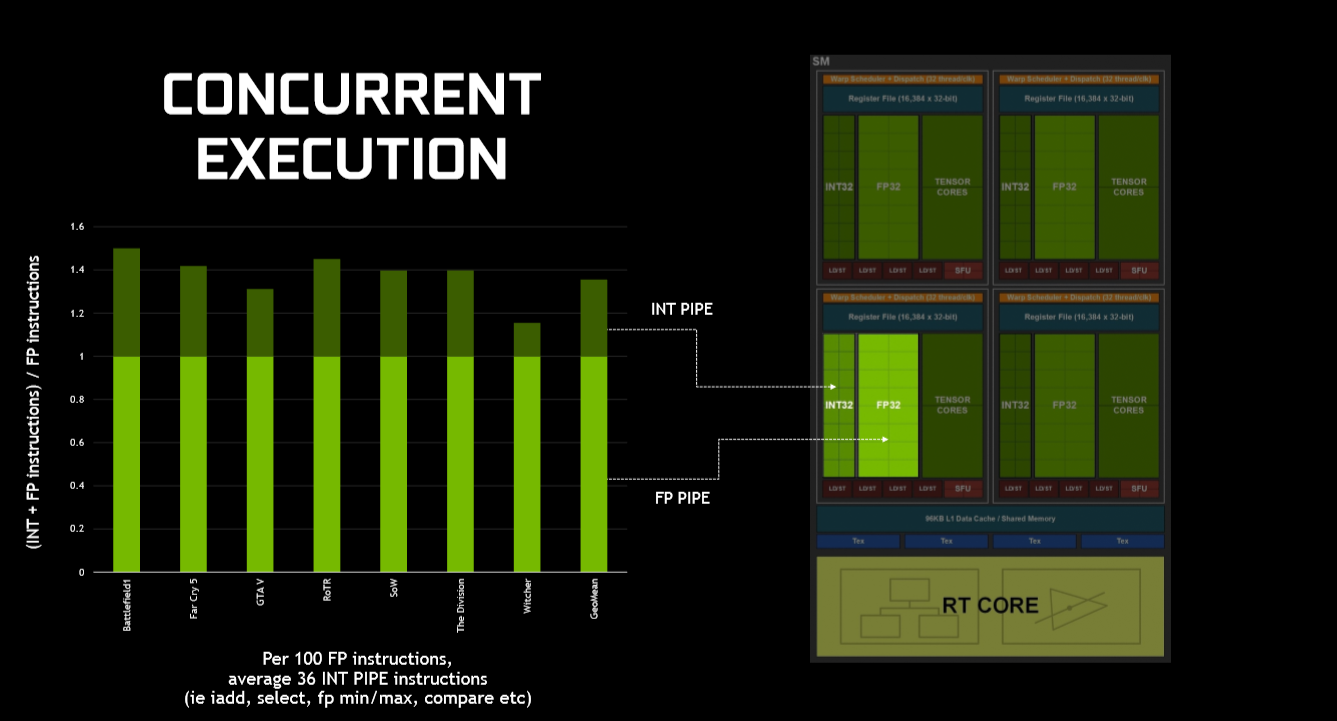Benetanegia
Regular
The thing is that we dont have scaling also in FP32. Witcher uses less than 20% INT calculation but only gets 38% increase over the 2080ti in 4k
Source Witcher Benchmark 4k: https://www.guru3d.com/articles-pages/geforce-rtx-3090-founder-review,24.html
Sourcer Picture of INT Usage at Witcher: https://m.hexus.net/tech/reviews/gr...g-architecture-examined-and-explained/?page=2

There's a lot more to it than just FP or INT...
And for what it's worth it's 55% faster on TPU:

I don't know if it's system bottleneck for some strange reason or just scene selection, which is actually a huge difference that reviewers need to take into account and can't always get it right.
